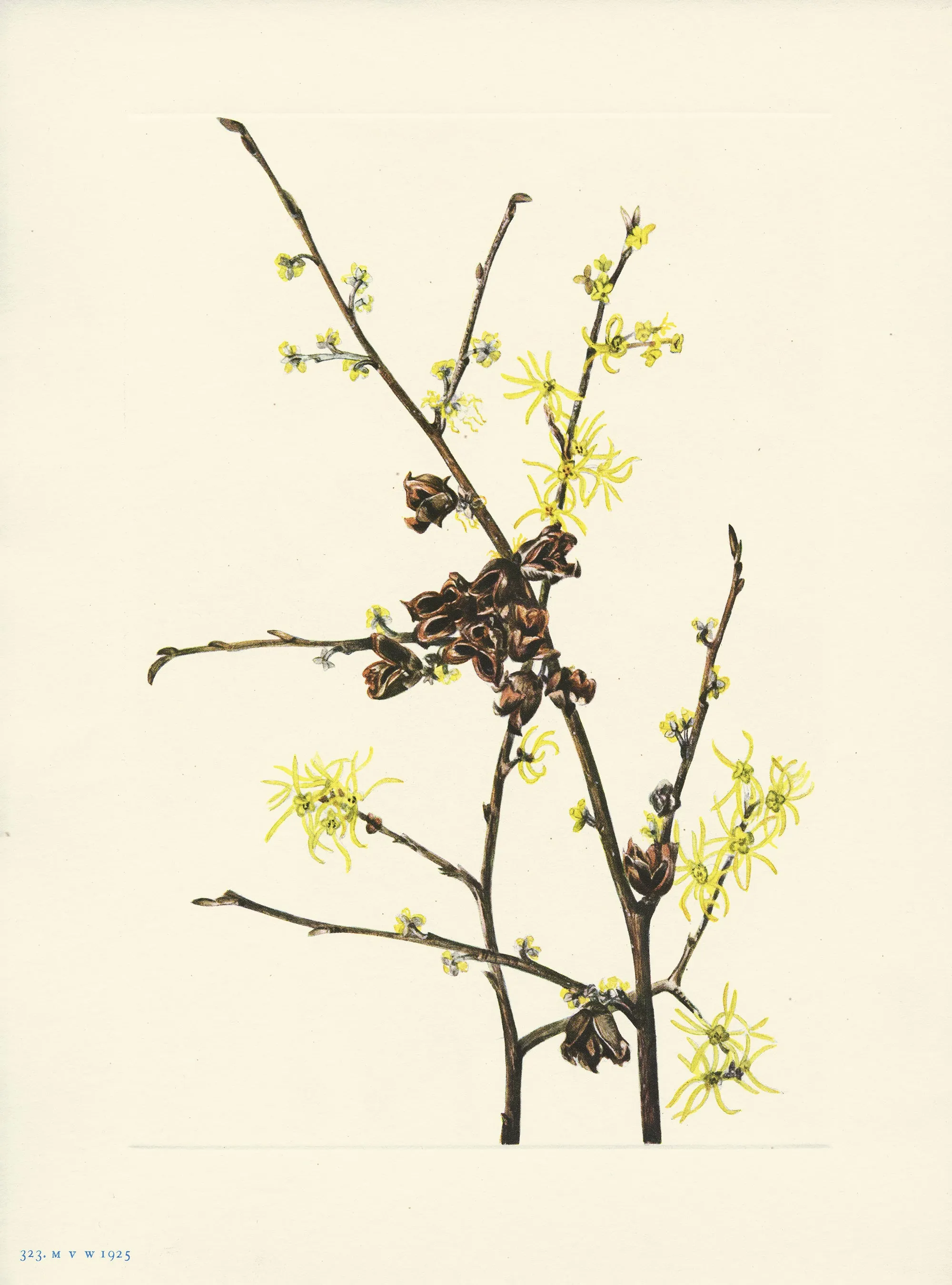Hamamelis virginiana Linnaeus In late autumn, when the leaves have nearly all fallen, and all other flowers long since have faded, the witch-hazel comes into bloom. For now the gray witch-hazel gives her flowers, Her tiny blooms, that sweeten all the air, To greet November's sun and chilly showers, With something dainty, hardy, sweet and fair. Elusive, drifting, cool and vaguely sweet, It gives the day a meaning all its own, November's incense, as she comes to meet The winter, when all flower scents have flown. L. Claude. The dainty pale yellow flowers sprawl from the axils of the yellow tinted leaves, and sometimes open even after the last leaf has fallen. The fruits do not ripen until almost a year has passed. Then the hard dry seeds are shot from the slowly splitting capsules to a distance of many yards from the parent plant. Witch-hazel was named by the early colonists from a fancied resemblance to another plant known to them in western Europe, and much of the folk-lore connected with the latter was transferred with the name. The twigs are sup- posed to possess occult powers when in the hands of persons capable of interpreting the movements, and to reveal the presence of water or mineral deposits. Witch-hazel is used in medicine, because of the soothing properties of the distilled extract. The witch-hazels belong to a small plant family distantly related to the roses. The species here described is found from Florida north- ward to Nova Scotia, Ontario, and Minnesota. A relative that grows from Louisiana to Missouri blooms in earliest spring. The specimens painted grew near Washington, District of Colum- bia.
We produce all of our on images in shop, and we are happy to offer custom work to our customers. Please inquire for pricing and options.












